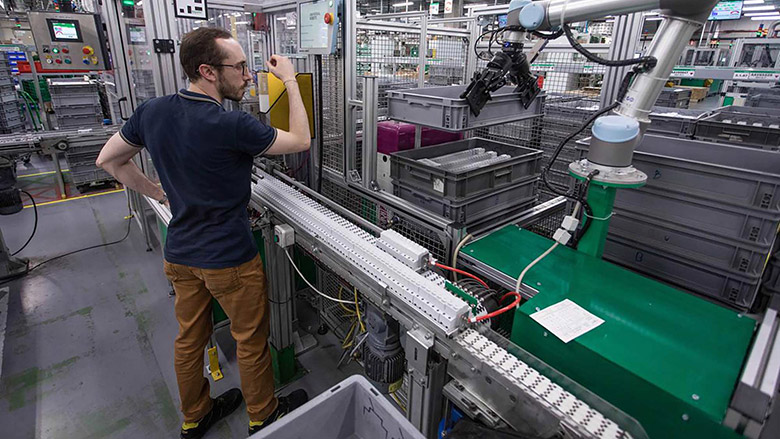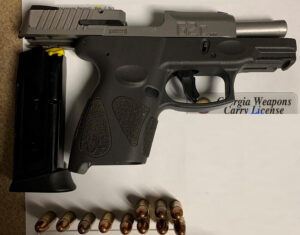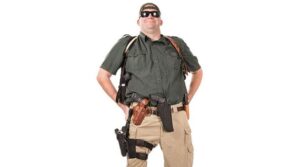To remove a pallet from your gun safe, always empty the gun safe first and maintain balance. Avoid rushing the process to prevent injuries or damage.
Removing a pallet from your gun safe is a task that requires patience, careful planning, and adherence to safety protocols. An improperly handled gun safe can lead to serious injury or damage to your property. Before you begin, ensure that the safe is completely unloaded to avoid any possible accidents.
It’s also crucial to have the right tools and assistance ready. The process should never be a one-person job; always involve at least one more individual who can help with lifting and guiding the safe. Keeping the area clear of obstacles and wearing protective gear are essential steps to securing a successful and safe removal. By following these simple dos and don’ts, you can efficiently and safely remove a pallet from under your gun safe.
The Importance Of Safety First
Removing a pallet from your gun safe is not just a matter of strength – it’s about safety too. Every step matters, as risks can lead to severe consequences. Proper knowledge and caution during this process are crucial for protection.
Why Taking Precautions Matters
- Prevents Accidents: Secure handling minimizes risks of injury.
- Safeguards Property: Careful removal prevents damage to your gun safe and firearms.
- Maintains Functionality: Correct disassembly ensures the integrity of the safe’s future use.
Consequences Of Negligence
| Negligence | Consequences |
|---|---|
| Ignoring Safety Gear | Potential for personal injury |
| Rushing the Process | Possible damage to the safe and surroundings |
| Improper Lifting | Risk of back injury or strain |

Credit: www.theblackgoosedesign.com
Preparing To Remove A Pallet
Handling a pallet in your gun safe requires careful steps. Even before touching it, you should understand the process. A clear plan keeps both you and your safe contents secure. Let’s get into the key actions necessary to prepare for this task.
Assessing The Weight And Size
Knowing your pallet’s weight and dimensions is crucial. This information helps in crafting a removal plan. It also ensures your safety and protects the contents of your safe. Use a scale and tape measure to get these details. Document them for reference during the removal process. Never guess, as miscalculations can lead to accidents or damage.
Gathering The Right Tools
To remove a pallet efficiently, you need the right equipment. Gather tools that match the weight and size you assessed earlier. This might include:
- Heavy-duty gloves: to protect your hands.
- Dolly or hand truck: to handle heavy lifting.
- Pry bar: if the pallet is nailed or stuck.
- Assistants: for an extra set of hands.
Bundle these tools near your safe. This allows quick access and a smoother process. Always use tools designed for such tasks to avoid personal harm or damage to your safe or its contents.
Step-by-step Pallet Removal
Welcome to our comprehensive guide on Step-by-Step Pallet Removal. Safely extracting a pallet from your gun safe is key to maintaining your equipment and ensuring safety. Follow these steps to remove a pallet without causing damage or risking injury.
Clearing The Area
Prioritize safety by clearing the area around your gun safe. Ensure ample space for movement. Keep the path obstruction-free. This precaution prevents accidents during pallet removal.
- Remove nearby items.
- Secure a wide-clearance zone.
- Check for tripping hazards.
Securing The Gun Safe
Stabilize your safe before removing the pallet. This stops the safe from tipping over. It protects both the safe and the user. Use locking mechanisms or anchor the safe to the ground, if available.
- Lock the safe’s door.
- Anchors or weights might be needed.
- Double-check stability before proceeding.
Lifting Techniques
Employ proper lifting techniques to remove the pallet. This ensures your safety. Avoid straining your back. Keep your spine aligned and lift with your legs.
| Technique | Details |
|---|---|
| Bend at the knees | Keeps your spine straight |
| Lift with legs | Prevents back injuries |
Consider using a lifting aid like a pallet jack or trolley. A partner can help carry the load. Always communicate and coordinate.

Credit: globegazette.com
Common Mistakes To Avoid
When removing a pallet from your gun safe, precision and care are vital. Several common mistakes can lead to damage or injury. To ensure a smooth process, stay mindful of these pitfalls.
Ignoring Safe Locking Mechanisms
Never overlook the locking system of your gun safe. Here are some key points:
- Read the manual before attempting any removal.
- Double-check the lock is fully disengaged.
- Avoid using force on a locked safe.
Forgetting these steps may cause permanent damage to your safe.
Poor Body Mechanics
Using the wrong body movements can lead to injury. Keep these in mind:
- Bend your knees, not your back, when lifting.
- Keep the pallet close to your body as you move.
- Use slow and steady movements.
Ignoring these methods could result in muscle strain or worse.
Post-removal Tips
Once the pallet is out of your gun safe, a few essential steps follow. These tips ensure lasting safety and proper maintenance. Let’s dive into the best course of action post-pallet removal.
Inspecting The Safe For Damage
Checking your safe post-removal is critical. You want to ensure your items stay secure. Look over the interior and exterior. Seek out scratches or dents that could affect its integrity.
- Interior check: Examine the lining, racks, and mounts. Make sure none are loose or damaged.
- Door operation: Open and close the door. It should work smoothly without resistance.
- Lock mechanism: Test the lock. Confirm it engages and releases without issue.
Record any damage. If severe, contact the manufacturer or a professional.
Proper Disposal Of The Pallet
Disposing of the pallet correctly is essential. Be mindful of your environment. Reuse or recycle the pallet if possible.
- Reuse: Can the pallet become furniture or storage? Creative repurposing is great for the environment.
- Recycling: Many facilities accept wood pallets for recycling. Check local options.
| Method | Description | Environment Impact |
|---|---|---|
| Repurpose | DIY projects, furniture, etc. | Positive |
| Recycle | Processed into new items | Reduces waste |
| Dispose | Trash or landfill | Negative |
Do not leave the pallet out as trash. Avoid contributing to landfill waste when you have better options.
Credit: www.guilfordcountync.gov
Frequently Asked Questions Of Removing A Pallet From Your Gun Safe Dos And Donts
Can I Leave My Safe On The Pallet?
It’s not recommended to leave your safe on the pallet. Removing it prevents moisture buildup and ensures stability. Always secure your safe directly to the floor for safety.
Can You Move A Safe With A Pallet Jack?
Yes, you can move a safe using a pallet jack, provided the safe’s weight does not exceed the jack’s capacity and the ground is level and stable. Always ensure safe handling to prevent injuries or damage.
Where Should You Not Put A Gun Safe?
Avoid placing a gun safe in damp areas, near exterior walls or windows, and in plain sight or isolated spots like garages or sheds that lack security. Always prioritize a hidden, climate-controlled, and secure location within your home.
Do Gun Safes Have To Be Bolted To The Floor?
Gun safes do not have to be bolted to the floor, but it is highly recommended for added security against theft and to prevent tipping. Bolting can also be a requirement for insurance purposes or to comply with local gun safety regulations.
Conclusion
Safely removing a pallet from your gun safe is crucial. Remember, patience and the right tools are key. Avoid rushing and using improper equipment. Stick with the dos and don’ts to protect your firearms and ensure your safety. Regular maintenance can prevent future complications.
Stay vigilant and cautious throughout the process.



